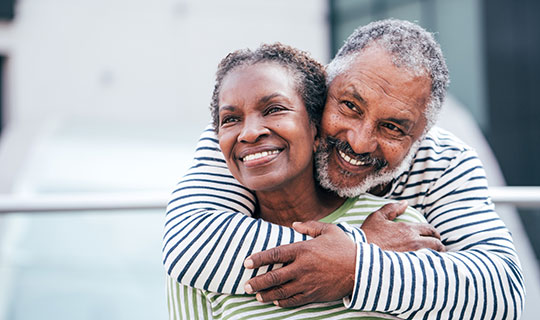 Ten thousand people in the United States turn 65 every single day and this will continue until 2030. As we all get older, we become more susceptible to complications with our health. Common health issues that occur in older adults include memory loss or cognitive change and falling.
Ten thousand people in the United States turn 65 every single day and this will continue until 2030. As we all get older, we become more susceptible to complications with our health. Common health issues that occur in older adults include memory loss or cognitive change and falling.
The Centers for Disease Control and Prevention report that each year millions of older adults (age 65 and older) fall – in fact it’s estimated that more than one out of four older adults fall each year. And falling once doubles your chances of falling again. Falls can cause a number of injuries, including broken bones, head injuries, sprains and fractures.
Dr. Jessica Israel, the Corporate Chair of Geriatrics and Palliative Care for RWJBarnabas Health offers some insight into the risk of falling for older adults and how to “seniorize” your home to help reduce the chances of a fall and to keep your home environment as safe as possible for aging individuals.
“Older adults are at an increased risk for falling for many reasons,” said Dr. Israel. “As you age, your strength and eyesight decreases. Your sense of balance can also decrease as you age and medication side-effects can make it even more difficult to maintain balance. Foot pain and poor footwear can cause older adults to fall as well.” These things, in combination with home hazards, can increase the likelihood of falling for a population that’s already at risk.
“Obviously if they’re capable, we’d love for older adults to live in their home for as long as they can, but oftentimes some adjustments need to be made,” said Dr. Israel.
According to Dr. Israel, some easy fixes to reduce the risk of falling include:
- Installing ramps
- Getting rid of throw rugs or securing carpets and rugs firmly to the floor
- Removing clutter and cords from walkways and high traffic areas
- Putting non-skid surfaces on stairs or installing chairlifts
Other at-home fixes might not be as intuitive. Dr. Israel also suggests:
- Installing nightlights throughout the house for those who get up in the night to use the bathroom
- Ensuring the lighting in all rooms is adequate
- Removing items from high shelves and putting them lower, back within reach
- Re-arranging furniture to provide wider walking paths
- Checking older furniture to ensure it can take weight if leaned on for support
- Keeping breakable items and sharp corners away from the bed to reduce the risk of a serious injury in the event of a fall out of bed
Bathrooms can present a whole host of other fall risks. In fact, the CDC reports over half the injuries sustained by people over the age of 85 occur in the bathroom.
“To make your bathroom more accessible for older adults you should consider installing handrails and grab bars on the sides of the toilet as well as in and around the shower,” said Dr. Israel. “You should put down non-slip mats in front of toilets and sinks in addition to inside and outside of showers. You can even put a bench inside the shower and some companies will install a walk-in tub for older adults. Sometimes a raised toilet is a good solution as well.”
Dr. Israel also recommends removing locks from bathrooms and bedrooms to ensure that if an older adult fall or injures themselves, they can be accessed as quickly as possible.
Other ways to ensure that an older adult’s house is safe for independent living, includes:
- Replacing cabinet and drawer handles with knobs that are easier to grab and pull
- Reducing the hot water setting in your home to 120 degrees Fahrenheit or below to reduce risk of scalding burns
- Making sure the home has a working fire extinguisher that’s easily accessible
- Regularly checking for smoke detectors and carbon monoxide detectors
- Installing easy to open windows for those with arthritis
In addition to having specialized household modifications, it is also vital for seniors to have specialized health care services.
“The needs of someone who is older and with a higher disease burden is very different than someone who is younger,” explained Dr. Israel. “Hospitals need to be prepared to deal with these patients and know how to communicate with both patients and families.”
As the Corporate Chair of Geriatrics and Palliative Care Dr. Israel has been tasked to do just that. As her first step, she established the RWJBarnabas Health Geriatric Collaborative. Through the Collaborative, Dr. Israel has identified two to three experts per hospital throughout the RWJBarnabas Health system to meet regularly to share best practices and to bring back to their respective facilities.
“We’re also expanding and extending our proven clinical programs,” continued Dr. Israel. “We have the James and Sharon Maida Geriatrics Institute at Monmouth Medical Center, Southern Campus where we provide integrated geriatric services in one convenient location. It’s a multidisciplinary outpatient practice and with standardized evidence care programs for taking care of aging adults as well as socialization and education so that members can improve their well-being and age successfully. We have plans to open four more programs like the James and Sharon Maida Geriatrics Institute within the RWJBarnabas Health system in the next two years.”
For more information on the James and Sharon Maida Geriatrics Institute and its various services click here or call 732.886.4700.